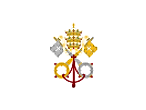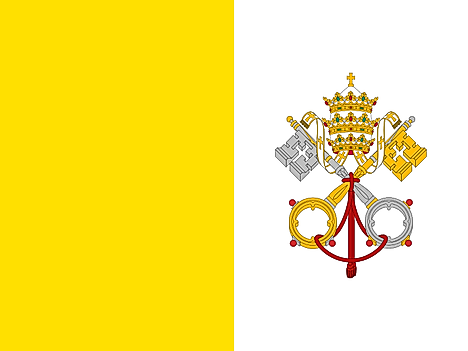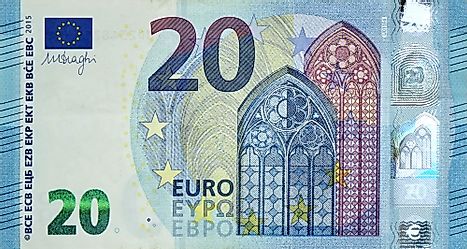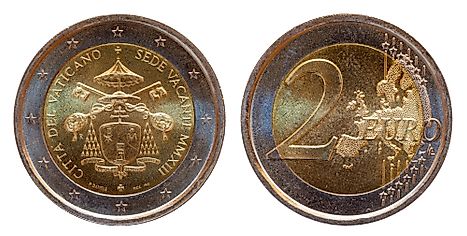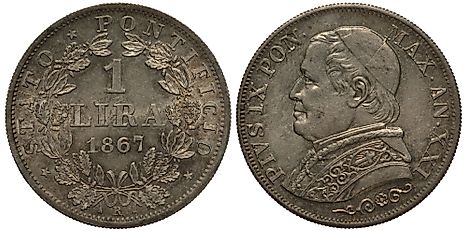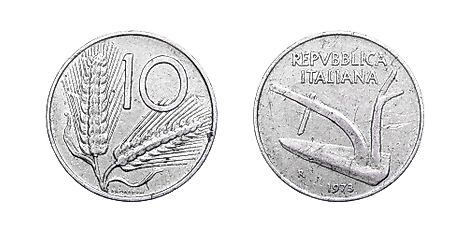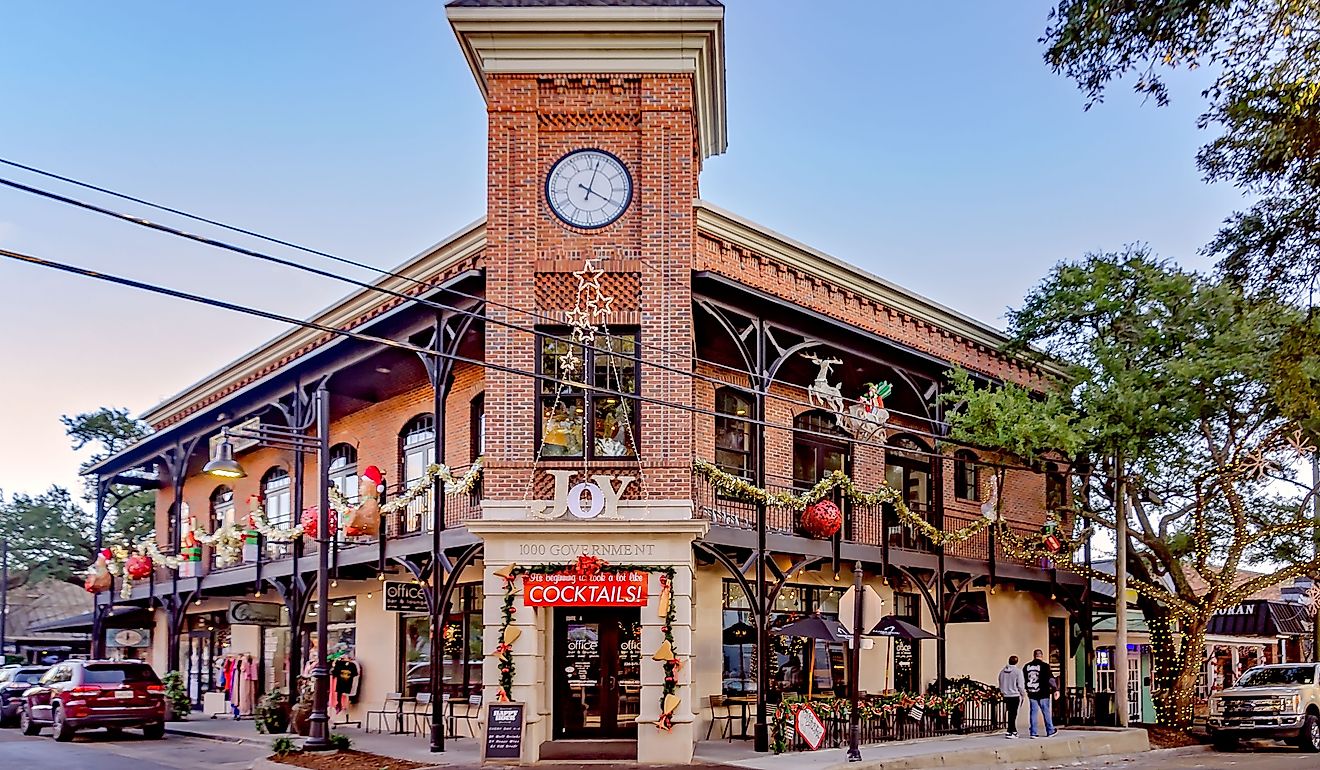Flags, Symbols & Currency of Vatican
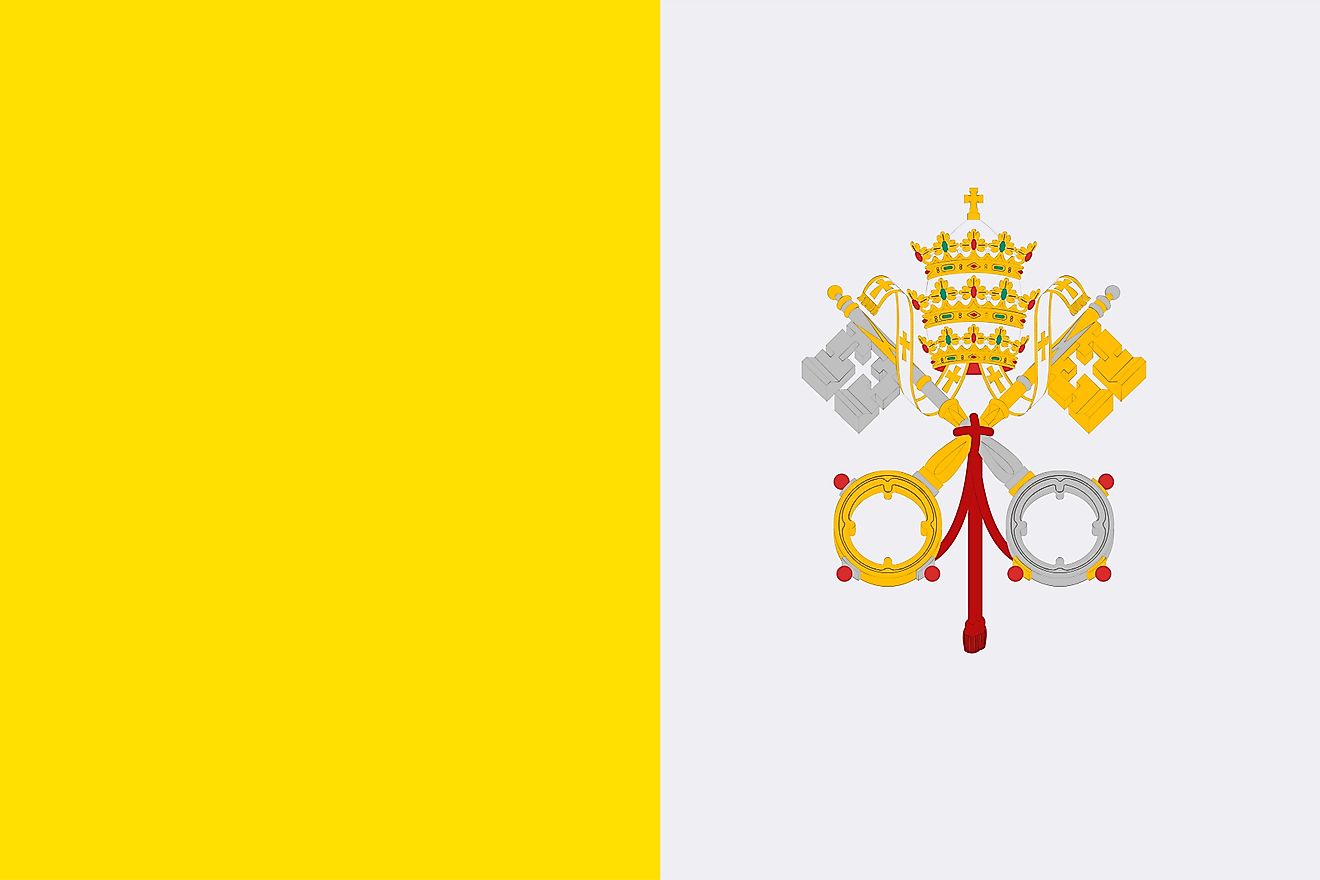
The National Flag of Vatican City (Holy See) was adopted on June 7, 1929.
The National Flag of Vatican City (Holy See) is a square-shaped vertical bicolor featuring two bands: one yellow or gold band on the hoist side and one white band on the fly side. The Vatican City coat of arms consisting of the crossed keys of Saint Peter surmounted by the three-tiered papal tiara is featured at the center of the white band. The silver key is always pointed towards the yellow band of the flag. The keys are tied together by a reddish rope. The gold and the silver keys respectively represent spiritual and worldly powers. The reddish rope alludes to the bond between the two powers. The colors of the flag also represent the colors of the key, where yellow represents the golden key and white represents the silver key. The flag has a proportion ratio of 1:1.
History of the Flag of Vatican City
In 1803, a white merchant flag featuring the Papal coat of arms at the center was introduced. Originally the Vatican’s Noble Guard wore a yellow and red cockade on their hats; which were similar to the colors used by the forces of Napoleon. In 1808, the Vatican’s Noble Guard received an order from Pope Pius VII to replace the red color of the cockade with white. The flag was formally adopted in 1815 and was subsequently replaced by a yellow and white flag on September 17, 1825. In 1831, the Papal Infantry adopted the square-shaped yellow and white flags. A Roman republic was declared on February 8, 1849, and the new government adopted a flag with the Italian tricolor and the motto “Dio e Popolo” inscribed on the central band. On July 2, 1849, the Papal government and its flags were restored. In 1862, a plain white and yellow squared flag was adopted by the last Papal Infantry. When Italy annexed the Papal States in 1870, the flags of these Papal States became obsolete. In 1929, Pope Pius XI signed the Lateran Treaty with Italy, creating the independent state - Vatican City governed by the Holy See. The Papal Authorities adopted the 1825 merchant flag again as the flag of the newly formed Vatican City. This new flag however was square-shaped like the 1862 Papal Infantry flags.
Symbols of Vatican
The Coat of Arms of Vatican

The Vatican Coat of Arms is a red shield containing two crossed keys (blazoned gules) of silver and gold interlaced by the triple crown (Papal tiara). The keys symbolize the Keys of Heaven and were presented to St. Peter by Christ. As the Popes are regarded as St. Peter's successors, the keys are one of the most important elements symbolizing the Holy See. The gold and the silver keys respectively represent spiritual and worldly powers. The keys are tied together by a reddish rope alluding to the bond between the two powers. The triple crown (Papal tiara) represents the Pope's mission as "supreme priest, pastor, and teacher."
National Anthem
- Anthem Title: "Inno e Marcia Pontificale" (Hymn and Pontifical March)
- Music Composer: Charles-François Gounod
- Lyricist: Raffaello Lavagna
- Date of Adoption: December 24, 1949
"Inno e Marcia Pontificale" (Hymn and Pontifical March) is the national anthem of Vatican City. The music of the anthem have been composed by Charles-François Gounod and the lyrics of the anthem have been authored by Raffaello Lavagna. The anthem was officially adopted as the national anthem on December 24, 1949.
According to the Vatican, the "Inno e Marcia Pontificale" (Hymn and Pontifical March) should be understood as a hymn that speaks to Roman Catholics worldwide and not as a national anthem. However, in practice it serves as the anthem for the Vatican City.
“Hymnus Pontificius” (Latin)
O felix Roma, O felix Roma nobilis.
O felix Roma, Roma felix Roma nobilis.
Sedes es Petri, qui Christi vicem gerit,
Sedes es Petri, qui apostolus est pacis.
Pontifex tecum erimus omnes nos
Pontifex es magister qui tuos confirmas fratres.
Pontifex tecum erimus omnes nos
Pontifex es magister qui tuos confirmas fratres.
Pontifex fundamentum ac robur nostrum,
Hominumque piscator pastor es gregis
ligans terram et coelum.
Petre, tu es Christi es Vicarius super terram,
Rupes inter fluctus, tu es pharus ac veritas.
Tu Christi es caritas, tu es unitatis custos,
Promptus libertatis defensor; in te auctoritas.
Petre, tu es Christi es Vicarius super terram,
Rupes inter fluctus, tu es pharus ac veritas.
Tu Christi es caritas, tu es unitatis custos,
Promptus libertatis defensor; in te auctoritas.
O Roma nobilis, O Roma felix nobilis.
“Pontifical Anthem”
O fortunate Rome, O fortunate noble Rome.
O fortunate Rome, fortunate and noble Rome.
You are the see of Peter, who acts in the place of Christ,
You are the see of Peter, who is the apostle of peace.
Pontiff, we will all be with you
Pontiff, be the teacher who confirms your brethren.
Pontiff, we will all be with you
Pontiff, be the teacher who confirms your brethren.
Pontiff, our foundation and our strength,
And fisher of men, you are the shepherd of the flock,
binding earth and heaven.
Peter, you are the are the vicar of Christ upon the earth,
A rock amidst the waves, you are a beacon and the truth.
You are the love of Christ, you are the guardian of unity,
Ready defender of liberty; authority is in you.
Peter, you are the are the vicar of Christ upon the earth,
A rock amidst the waves, you are a beacon and the truth.
You are the love of Christ, you are the guardian of unity,
Ready defender of liberty; authority is in you.
O noble Rome, Oh fortunate, noble Rome.
The Currency of Vatican is the Euro
The current official currency of Vatican City is the euro.
The Vatican City is not a member of the EU or Eurozone nations, hence in 2000 a contract signed between Italy and The Vatican City, allowed Vatican City to use the euro as its official currency. Vatican Euro coins are designed by the Philatelic and Numismatic Office of the Vatican City and minted by Istituto Poligrafico e Zecca dello Stato (IPZS), Rome.
Coins: First Series of 1 cent, 10 cents, and 1 Euro coins had an image of Pope John Paul II. The second series issued in 2005 had images of the coat of arms of the Holy Roman Church and the Insignia of the Apostolic Chamber. The third series issued in 2013 had an image of Pope Benedict XVI. The fourth series had an image of Pope Francis. In 2017, the fifth series of coins were issued which have the images of the European Union Stars and the Coat of Arms of Pope Francis.
Historical Currencies of Vatican
In 1376, the currency of the consolidated Roman Papal States was Roman scudi. It was subdivided into 100 baiocchi. One baiocco was equal to five Quattrini. Other coins like Grosso, carlino, etc were also used. Santo Monte Della Pieta di Roma had introduced the first scudi paper in 1785. Due to the invasion by France, the use of scudi was ceased for a brief period and was restored in 1814. Scudi remained as the currency of the Vatican till 1866. The Vatican currency was severely affected over the next century due to several invasions and the subsequent loss of power of the church. Pope Pius IX had joined the Latin Monetary Union in 1866 and had introduced the Papal lira as the official currency. The Papal Lira was pegged to the Italian lira until 1870, after which the Papal lira ceased to exist. In 1929, after the Lateran Pact, distinct currency coins and banknotes with denominations in centesimi and lire was introduced. This currency was pegged to the Italian Lira which was the official currency of Italy from 1861-2002. The Italian Lira was replaced by the euro on January 1, 1999, and started to be officially used from 2002.
